Week-by-week pregnancy symptoms calendar: Here’s your one-stop resource for everything you need to know and what to expect about being pregnant and growing a baby as the weeks go by.
Weeks 1-4
Pregnancy week by week: You are one week pregnant.
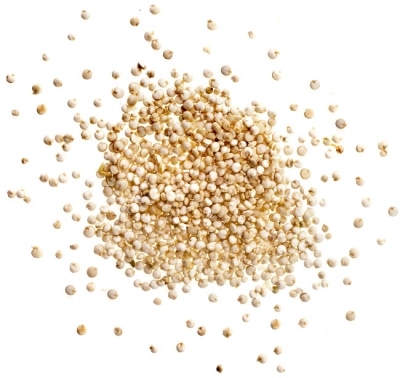
Your Body
Your pregnancy is calculated not from the day your baby was conceived, but from the first day of your last menstrual period. During this first week, the blood-rich lining of the uterus is released and leaves your body over the next three to five days.
At the same time, your body begins to prepare for the possibility of pregnancy: already there is an egg ripening in one of your ovaries.
Have you been planning and preparing for a baby? Ideally, you are taking folic acid supplements (which help to prevent neural tube defects such as spina bifida) and eating well.
Baby’s World
You can already estimate your not-yet-conceived baby’s birthday! It will be roughly 40 weeks from the first day of your last period.
Of course, that is based on a 28-day menstrual cycle, with conception happening right in the middle. If your cycles are typically longer or shorter, be sure to let your doctor or midwife know so that can be taken into account.
At some point in the next week or so, the rapidly-multiplying cells reach the size of about the head of a pin and then divide into two parts. One part will become the placenta, providing nourishment for the baby as it grows, and the other half will become your baby.
The cells in the zygote continue to multiply rapidly: the placenta attaches itself to the wall of the uterus and the other half becomes a hollow ball. The baby’s heart and internal organs will develop in the middle of that ball.
Fun Fact
At the moment the sperm and egg join, all the genes are in place to determine many things about this baby: eye color, hair color and so much more. Your baby is a unique individual from the very beginning.
Week 5
Pregnancy week by week: You are five weeks pregnant.

Your Body
HCG (human Chorionic Gonadotropin) hormone levels are sufficiently high in week five for a home pregnancy test to display a positive result.
This exciting news coupled with increased and fluctuating hormones can cause a minefield of emotions — exhilaration and anticipation mixed with anxiety and trepidation.
You may start to notice some of the early signs of pregnancy including headaches and dizziness, nausea and vomiting, swollen breasts, heartburn, cravings, bloating, constipation, frequent urination, and increased metabolism.
You may have a heightened sense of smell as well. Within a week or two, you may notice your clothes are a bit tighter.
It’s common to feel tired, so get as much rest as you can. Frequent small meals can help reduce nausea and fatigue – many women find it helps to have food beside their beds so they can snack before getting up.
Continue with your folic acid supplement, and increase calcium in your diet. It’s a good time to get in touch with your midwife or doctor and make that first appointment.
Baby’s World
The c-shaped embryo looks somewhat like a tadpole and is about the size of a sesame seed (2.5 mm/0.09 in.). The placenta helps transfer nutrients from you to the baby through the newly-developed umbilical cord.
Their head is growing faster than other body parts to make room for his brain, and his nose and cheeks are visible. The heart is dividing into left and right chambers and beats faintly, although it is still not fully functioning.
Other major organs like the kidneys and stomach have begun to form. Paddle-like arms and legs can be seen but fingers and toes have yet to appear.
Fun fact
In the first trimester, a baby undergoes the most development and growth, more so than any other stage of pregnancy.
Week 6
Pregnancy week by week: You are six weeks pregnant.

Your Body
The term “morning sickness” is misleading. Although some moms-to-be experience bouts of nausea and/or vomiting in the early part of the day that taper off, for many others queasiness is a constant companion. A quarter of pregnant women are lucky enough not to suffer at all.
The pregnancy hormones estrogen and progesterone encourage the formation of new milk-producing ducts in your breasts, and they may increase in size and feel tender. A bra with a larger cup size may help.
Your expanding uterus is pressing on your bladder, hence your frequent bathroom visits. Doing Kegel exercises will improve bladder control, shorten the pushing stage during labor and help prevent vaginal tearing. You can do them anywhere, at any time and no one will notice! Begin with an empty bladder. Contract your “pee” muscles like you’re trying to stop the flow of urine midstream and hold for five to 10 seconds. Try to do as many as 100 throughout the day.
Constipation is common in the early stages of pregnancy. The culprit is progesterone, which relaxes stomach and intestinal muscles and triggers slow digestion. Drink plenty of fluids and increase the amount of fibre in your diet.
This is a good time to schedule a dentist’s visit, as pregnancy can cause dental problems, including inflamed gums, bleeding and tooth decay. Research indicates there is a link between gum disease and premature births and low birth weights.
Toxoplasmosis, a parasitic infection that can cause birth defects, is found in cat feces so if you own a cat leave the cleaning duties to your partner, and be cautious if you are gardening where cats may roam. Don’t eat uncooked seafood, deli meats or unpasteurized dairy products as they can be contaminated with the bacteria Listeria, another potential cause of birth defects.
Baby’s World
Your baby is still smaller than a bean (2 – 4 mm/0.08 – 0.16 in), but developing rapidly. Her legs are usually bent, which makes gauging her size a challenge so she is measured from the top of her head to her bottom, instead of head to toe. Nostril and ear openings are now visible. A chin, elbows, wrists and fingers can be detected, and her heart, no bigger than a poppy seed, is audible on ultrasound and pumps blood to other minute organs. She has her own blood type, and her growing intestines are temporarily housed inside the umbilical cord. She’s started to make her first, slight moves — perhaps her hands and feet are twitching — but you won’t feel those movements for many weeks. The neural tube, the precursor to the central nervous system (the brain and spinal cord), closes.
Fun Fact
Baby’s heart rate is 100 to 150 beats per minute — twice as fast as yours!
Week 7
Pregnancy week by week: You are seven weeks pregnant.

Your Body
Week seven’s symptoms echo those of week six. You’re not showing yet but a scale may tell you that you’ve put on a bit of weight. Pregnancy weight gain normally hovers between 25 and 35 pounds. The nausea has not abated, you have a persistent urge to pee and the constipation is just plain uncomfortable. Insomnia may be the bane of your existence now; however, when you do get some shut-eye, your dreams are vivid and odd. Chalk this up to the mental, emotional and physiological changes that pregnancy brings.
Some new symptoms have cropped up: heartburn and an increase in saliva. Curb the former by elevating your head when you sleep, avoiding caffeine and heavy meals and eating foods that trigger heartburn, like citrus fruits and spicy fare. And keep a supply of antacids on hand.
When you look in the mirror, do you see a pregnancy glow? Increases in oil gland secretions and the volume of blood below the skin’s surface give your cheeks a rosy, waxy sheen. Unfortunately, some future mom’s are prone to acne during pregnancy.
Some of the foods you used to crave may now repulse you. One medical theory about food cravings and aversions is that they are Mother Nature’s way of coercing your body into getting the nutrients it needs during pregnancy. Planning balanced meals can help counterbalance yo-yo eating.
Pre-pregnancy your uterus was roughly the size of a fist, now it’s grown to the size of a grapefruit. As it enlarges, you will feel stomach cramps and minor twinges.
Baby’s World
Talk about a growth spurt, he’s 10,000 times bigger than when he was conceived and is the size of a blueberry. His prehistoric-like tail remains but will eventually disappear. The makings of retinas, lens, eyelid folds, teeth, a tongue, an upper lip, nipples and an appendix are evident. His webbed fingers are becoming more distinct, and his fragile, translucent skin reveals new veins. His heart has left and right chambers, and the esophagus and trachea, flanked by the lungs, are dividing into separate tubes.
Fun Fact
Every minute your unborn baby is generating 100 new brain cells, and he grows three sets of kidneys before he is born.
Week 8
Pregnancy week by week: You are eight weeks pregnant.

Your Body
Since your baby feeds on your blood supply and your reproductive organs have enlarged, your body requires more blood flow — the volume will increase up to 50 percent by the time you give birth. This additional burden on your circulation makes you the ideal candidate for varicose and spider veins and hemorrhoids. Kegel exercises strengthen the muscles around the anus and improve circulation near the rectum. Exercise every day, refrain from standing and sitting for extended periods, when resting elevate your legs and feet and if seated don’t cross your or ankles or legs.
The last week of the second month of your pregnancy can play havoc on your appetite. Don’t worry if you can’t consume the extra 300 calories needed daily. Weight loss, common in the first three months, doesn’t harm baby — its minimal nutritional needs are being met — or mother. If you continue to struggle with nausea and vomiting, snacking on crackers will raise blood sugar levels and boost your energy. Ginger, an anti-emetic, is also an effective treatment and can be found in teas, cookies and lollipops.
While you shouldn’t abandon your normal activity, consult with your physician before starting to exercise. Take a cue from your increased heart rate and slack off a bit at the gym. A fit pregnancy provides you with stamina for labor but don’t overexert yourself and become short of breath. The hCG (human Chorionic Gonadotropin) hormone can cause you to overheat quickly. Do a proper warm up and cool down, take regular breaks and drink from your water bottle.
Pregnancy hormones increase vaginal discharge. The milky secretions protect the birth canal from infection. Don’t overwash this area in the shower, wear cotton underpants and pantyliners, if you need to.
Baby’s World
She’s about the size of a raspberry, measuring 28 mm. (1.1 in.) from crown to rump. Her teeny tail is gone and her rounded head makes her appear more human. Her limbs are longer and her body is gradually straightening, her flexed wrists and hands sit over her heart, cartilage and bone have begun to form, and she’s developing taste buds. Her inner and outer ears are taking shape (having moved up from their original spots on her head) and her nose protrudes. Her intestines will relocate from the umbilical cord to her abdomen. Her frequent movements and gentle shifts are still imperceptible to mom.
Fun Fact
Baby is growing a millimeter a day, and her eyelids remain sealed until the 27th week.
Week 9
Pregnancy week by week: You are nine weeks pregnant.

Your Body
The start of month three means pesky hormones are still making you moody. You may also feel anxious — holding onto a secret is a tad stressful — if you’re waiting for the three-month mark before telling family and friends about your bun in the oven. To cope, try breathing exercises, yoga and napping. Buy a body or pregnancy pillow to get a restful sleep.
The placenta’s job is to feed the fetus and dispose of waste. Building it is a monumental task for mom: metabolic and hormonal surges combined with low blood pressure and blood sugar levels leave her drained. The added blood circulating in your system results in nosebleeds and dizziness but compensates for blood loss during labor.
Your breasts are engorged and your areolas are enlarging and darkening. You may also be leaking colostrum, the “first milk,” which your body produces that is loaded with nutrients and antibodies to nourish your baby after he is born. Gently wash your nipples, and wear nursing bra pads to absorb moisture.
As your belly stretches, the skin becomes tingly, dry and itchy. Slathering on cocoa butter and soaking in an oatmeal bath won’t prevent pregnancy stretch marks but will soothe irritation.
Seventy-five percent of pregnant women endure back problems like sciatica so take warm, not hot baths, and use warm compresses or a heating pad to alleviate pain.
Higher levels of estrogen make your vagina the ideal setting for yeast infections. Your health practitioner can prescribe a vaginal cream or suppository that contains clotrimazole to treat it.
Baby’s World
Measured from the top of his head to his bum, he’s 22 to 33 mm (0.9 – 1.29 in.) and weighs 2 g (0.0044 lb.), roughly the size of a grape. His head, half the size of his body, is tucked into his chest. Hair follicles are budding. He’s developing arm and leg muscles and can bend at the elbows. His bladder is producing urine, and his intestinal system, the pancreas, gallbladder and anus, are forming.
Fun Fact
Is it a he or she? Genitals are forming but you won’t know baby’s gender yet.
Week 10
Pregnancy week by week: You are ten weeks pregnant.

Your Body
Prenatal and genetic tests detect birth defects and abnormalities and are usually conducted from weeks 10 to 12 as are first trimester ultrasounds. You may want to consider undergoing testing if you are over 35 or have a family history of genetic disorders. The purpose of the first pregnancy ultrasound is twofold: is to determine how many weeks pregnant you are and to approximate your due date. You will see the first images of your beautiful baby on screen, and his tiny heartbeat will be visible.
While you’re not ready to graduate to maternity wear, wearing looser-fitting clothes will make you feel more comfortable. Your veins are becoming more prominent as they carry more blood to your unborn child. Your bowels are still in a holding pattern. Moderate exercise, a pregnancy diet rich in vegetables, fruits and whole grains and plenty of water will give them the nudge they need.
The reasons for recurring aches and pains is your uterus is now large enough to occupy most of your pelvis, and baby is placing additional pressure on your organs, ligaments and muscles. Also, the hormone relaxin relaxes and loosens ligaments and joints in preparation for childbirth — you need to be flexible throughout pregnancy and on the big day. Sign up for prenatal yoga or Pilates and get the most out of your limber new body.
The umbilical cord — the fetus’ lifeline — is a sturdy, flexible blood vessel 20 inches in length and the width of your index finger that connects you to your baby. One end is attached to the placenta, the other end is connected to baby’s belly button. It transports oxygen and nutrient-rich blood to your little one and returns de-oxygenated blood and waste, like carbon dioxide, from baby back to the placenta.
Baby’s World
Measured from head to bottom, she’s 31 to 42 mm (1.22 – 1.65 in.) and weighs 5 g (0.011 lb.). She’s the size of a cherry and shaped like a shrimp. The three layers of her cells — ectoderm, endoderm and mesoderm — are developing at a remarkably fast pace. Her facial features, fingers and toes are clearly identifiable. The eyes, external ears and upper lip have finally formed, and the kidneys are pumping out digestive juices. She knows how to swallow and can throw a kick. Peach fuzz and fingernails have made their first appearance.
Fun Fact
What a smarty pants! Nearly 250,000 neurons are forming each minute in baby’s brain.
Week 11
Pregnancy week by week: You are 11 weeks pregnant.

Your Body
You may have noticed a dark line of pigmentation running from your belly button to your pubic bone. The linea nigra is caused by an increase in melanin due to pregnancy hormones and disappears within months of delivery.
Round ligament pain — sharp pains, jabs and aches in your abdomen, hips and groin area — is caused when the rubbery ligaments that suspend the growing uterus within the abdomen are stretched and tug on nerve fibers. This discomfort is normal; try to relax until it subsides. Pulling your knees toward your stomach and resting on your side with a pillow under your belly and between your legs may help.
Progesterone, the pregnancy hormone coursing through your body, relaxes the muscle tissue in your stomach and intestines, making them work slower so they derive the most nutrients from food and pass them along to baby. The unfortunate by-product of this is a gassy mom-to-be. Eating smaller meals and avoiding fried and sugary foods, beans and cabbage will cut down on embarrassing emissions.
Do pregnancy leg cramps have you hopping out of bed in the middle of the night? This common symptom may be a sign of dehydration or insufficient amounts of potassium. Drink at least two liters of water a day and include bananas, spinach and mushrooms in your pregnancy diet.
Baby’s World
From the top of his head to his bum, he measures between 44 to 66 mm (1.7 – 2.8 in.) and weighs 8 g (0.017 lb.), about the size of a lime. The Doppler instrument can pick up his tiny heartbeat. Functioning nerves and muscles allow him to flex his arms and kick his legs but he weighs so little you won’t be able to feel his fluid and graceful movements. Now an adept underwater breather, he inhales and exhales amniotic fluid, strengthening his lungs as they develop. His small intestines are still wrapped around the umbilical cord. External genitalia have become a clitoris or penis.
Fun Fact
By sleeping on your left side, you increase blood flow to your baby.
Week 12
Pregnancy week by week: You are 12 weeks pregnant.

Your Body
Kudos to you, you’ve almost made it through the first trimester of pregnancy! On other positive notes, some of the sickness and lethargy you’ve been feeling in the last three months may be waning and your risk of miscarriage is dropping. Now that the uterus has shifted from the pelvic floor to the front of the abdomen, thereby reducing pressure on the bladder, you shouldn’t have to pee as often. And you might have something to show for all your hard work: a slightly rounded pregnant belly! Thanks to your repositioned uterus, you belly has more space to bulge.
Blurry vision in pregnancy is normal and is set off by the extra fluid your body is retaining. The liquid adds pressure to your eyeballs and can thicken the lens and cornea. This condition should correct itself a couple of months after you deliver your baby.
Baby’s World
She is around the size of a plum, measuring 61 mm (2.4 in.) from her crown to her buttocks. She weighs around 8 to 14 g (0.017 – 0.03 lb.) and could be held in your palm. She’s opening her mouth, making fists and curling her toes. Her vocals cords are forming, and she is capable of crying but it is silent. If you lay a hand on your belly, chances are baby will squirm, a sign her reflexes are in working order. Most of her organs and systems are completely formed. The pancreas is producing insulin while the pituitary gland and thyroid are secreting hormones. Her digestive system is contracting, prepping for when she will eventually eat in the outside world. Her intestines are slowly moving to the stomach cavity after being looped around the umbilical cord.
Fun Fact
The amniotic sac holds 50 milliliters of fluid by week 12.
Week 13
Pregnancy week by week: You are 13 weeks pregnant.

Your Body
Your forgetfulness and absent-mindedness or so-called “mommy brain” is brought on by pregnancy hormones like hCG (human Chorionic Gonadotropin). Fatigue can also take the rap for your slightly diminished mental capabilities.
Your libido is making a comeback. If you have the energy or interest, sex is a healthy, fun way to reconnect with your partner during this busy time in your lives (and don’t worry, having intercourse in pregnancy won’t hurt your baby). Some women believe that the increased blood flow to their genital area improves sex.
Clumsy lately? The pregnancy hormone relaxin does just that, relaxes joints and ligaments throughout your body, including your hands and feet, making you trip and drop things.
Baby’s World
He’s about the size of a peach (2.5 – 3.1 in/65 – 78 mm; 13 to 20 g/0.03 – 0.04 lb.) and is starting to resemble a newborn, both in his features and shape. Technically, he can now be called a fetus. Up until this time, his head has been disproportionately larger than his body. As his body races to catch up, his head’s growth rate slows down. His eyes have progressed from the sides of his head to the front of his face and are moving closer together. Fetal fingerprints are in place. His stomach remains essentially empty until he tastes his first breast milk. The kidneys and bladder filter and carry urine. An ultrasound can pinpoint the sex of your baby.
Fun Fact
If you’re pregnant with a girl, her ovaries now hold two million eggs, only one million of which she will be born with.
Week 14
Pregnancy week by week: You are 14 weeks pregnant.

Your Body
Welcome to the second trimester! You survived, reportedly for many women, the most physically taxing trimester. If you’re now announcing your pregnancy to family, friends and co-workers, you’re probably feeling relieved. Some of the uncomfortable symptoms of pregnancy (nausea, frequent urination, exhaustion, mood swings) have subsided in the second month. As the hCG (human Chorionic Gonadotropin) hormone drops and estrogen and progesterone levels shift, you’re embarking on a less demanding middle trimester.
You may feel fluttering, also known as “quickening” in pregnancy as baby moves but don’t be dismayed if you don’t, the bulk of women don’t feel any movement until between the 16th and 22nd weeks.
When pregnancy hormones hasten blood flow to the mucous membranes, your nasal passages become inflamed and congested. Running a humidifier or vaporizer and inhaling saline spray should make things more bearable. Prevent nosebleeds by gently blowing your nose.
You might not be ravenous, but your appetite is back. Keep in mind, you don’t have to eat twice as much because you have a baby on board; your daily caloric intake should increase by 300. While it’s okay to treat yourself occasionally, try to stay away from greasy and fatty foods — they have no nutritional value for baby.
The newfound energy that often characterizes the second trimester can help you get back on the fitness track. Exercise improves your mood, lessens pregnancy’s aches and pains, builds much-needed endurance for the months ahead and helps you sleep. The best news is that it helps your body bounce back faster after giving birth. Go for regular strolls in your neighborhood or enjoy low-impact activities like swimming and prenatal aquaerobics.
Baby’s World
When measured from crown to behind, your little one is 80 to 93 mm (3.15 – 3.7 in.) and weighs 25 g (0.06 lb.); she’s about the size of a lemon. The roof of her mouth is complete, and she has a repertoire of complex facial expressions: squinting, wrinkling her nose, frowning. Her neck is elongating and strong enough to pull up her chin. Her bones will calcify for the next eight weeks, becoming stronger. Fine, downy hair called lanugo covers her body and keeps her warm because she doesn’t have enough body fat.
Fun Fact
Your baby floats in amniotic fluid that replenishes itself every three hours.
Week 15
Pregnancy week by week: You are 15 weeks pregnant.

Your Body
If you run your hand along your belly 7.5 to 10 centimeters under your belly button, you can feel the firm, smooth top of your uterus. In medical speak, it’s called the fundus.
Because your immune system is suppressed to protect baby (your body perceives the fetus as a foreign entity), you’re more vulnerable to viruses like colds, coughs and the flu. Keep germs at bay by washing your hands regularly and not making close contact with people who are ill. Fight infection by consuming antioxidant-rich foods (they contain vitamins A and C), like berries, tomatoes, broccoli, garlic and green tea.
Dark, brownish splotches that appear around the eyes and on the nose and cheeks are called chloasma (a.k.a. “the pregnancy mask”) and are triggered by pregnancy hormones in 50 to 75 percent of expectant women. The darkening should fade after your baby’s birth. The sun only exacerbates these skin discolorations so, in the meantime, apply a sunblock with a high SPF and wear a hat when you’re outside.
Baby’s World
From the top of his head to his tush, baby measures 9 to 11 cm. (3.5 – 4.3 in.) and weighs 50 g (0.11 lb.); he’s the size of an apple. Hair on his head is sprouting and eyebrows are noticeable. His eyelids are fused together; however, he can still detect light. His hearing is developing at a rapid pace but because his brain is not sending auditory signals, he can’t hear. Blood vessels are visible through his delicate, tissue paper skin. His legs have outgrown his arms. The majority of major organs are in place — heart, lungs, liver, spleen, kidneys and pancreas — but some are not working yet. He may have started to suck his thumb.
Fun Fact
A fetus masters hiccups before he learns to breathe. Mom can’t hear these diaphragm spasms because baby’s windpipe is filled with fluid, not air.
Week 16
Pregnancy week by week: You are 16 weeks pregnant.
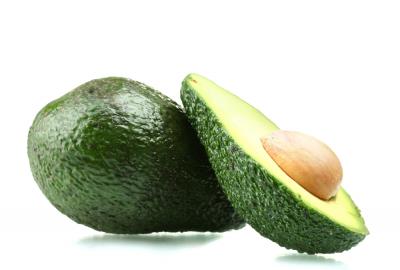
Your Body
Stretch marks may be visible on your breasts, thighs, hips, lower back and buttocks. The streaks vary in shade, depending on the mother’s skin color. Though they are often hereditary, these scars from torn skin in the dermis — the middle layer — are caused by pregnancy weight gain and hormones and stretching skin. Keeping skin hydrated and supple with moisturizers like Bio Oil won’t prevent stretch marks but may diminish their appearance. Consider these markings a badge of honor for carrying a baby for nine months!
Your growing baby and expanding uterus make it tricky for the pelvic floor, lower stomach and back muscles to stabilize and shift pelvis and back joints. Your body will naturally adjust your posture to compensate for the surplus weight out front — your lower back becomes more arched and the lower spine pulls forward so you lean back slightly when you walk. No wonder you have backache and joint pain! Wear comfy shoes, exercise, don’t do any heavy lifting, change your sitting and standing postures, kneel on all fours to relieve pressure and do pelvic tilt exercises.
Your placenta has reached maturity so you can breathe a sigh of relief; the chance of miscarriage has dropped dramatically. Its purpose is fourfold: secrete hormones, eliminate waste, feed nourishment and transport respiratory gases to the fetus through the umbilical cord. Up until now in your pregnancy, your body carried out those tasks. All that multitasking took a toll on you and was the reason you felt queasy and drained for months.
Baby’s Word
Measured from crown to backside, baby is 10 to 11 cm (3.9 – 4.3 in.) and weighs (99 g 0.22 lb.); roughly the size of an avocado. Her eyelashes are growing, and her fingers, knuckles and palms are lined with creases. The umbilical cord, baby’s life-support system, has traveled south and is connected to her abdomen. Fully grown, it is comprised of three blood vessels — a single vein and two arteries — surrounded and protected by a thick, gelatin-like tissue, Wharton’s jelly. This slippery coating prevents the cord from being compressed as it coils freely around baby in your womb.
Fun Fact
Baby plays with her first toy, the umbilical cord, by grabbing and pulling it. Don’t fret, she can’t damage the cord.
Week 17
Pregnancy week by week: You are 17 weeks pregnant.

Your Body
Healthy weight gain in pregnancy varies from woman to woman — a pound a week is recommended in the second and third trimesters — but rest assured not all of it is fat. The extra weight is broken down between the placenta, uterus, amniotic fluid, baby’s weight, your mammary glands, elevated blood volumes and, lastly, maternal fat and nutrient stores.
Water retention leads to a swollen face, hands, legs, ankles and feet, a universal pregnancy symptom called edema. Your body retains much-needed fluids to meet the needs of your unborn baby and prepare your pelvic joints and tissues for delivery. Summer heat, heavy activity, standing for extended periods and too much caffeine can worsen the condition. Counteract its effects by elevating your legs and increasing your fluid intake.
You’ve haven’t snored a day in your life and now suddenly your keeping your partner up at night. Irritated nasal passages — common in pregnancy — are to blame. Elevating your head with an extra pillow might help.
Heartburn that painful, burning sensation in your chest occurs when progesterone relaxes the valve between your esophagus and stomach. The valve can’t perform its normal function of stopping gastric acids from passing back into the esophagus and causing irritation. Prevention is the best medicine. Skip greasy, fatty and spicy foods, eat six small meals a day and wait at least an hour before lying down after eating.
Baby’s World
From crown to rump, he measures 11 to 12 cm. (4.3 – 4.7 in.), weighs 100 g (0.22 lb.) and is the size of an open palm. His body looks more proportional now that his torso and limbs are catching up to his once enlarged head. His eyes face forward, and he’s beginning to hear your heartbeat and muffled voice inside your body. Sweat glands are under construction and fat is depositing underneath his skin, which will eventually generate body heat. At this stage in development, his body is made up one percent fat and 85 percent water. The umbilical cord is thicker and sturdier.
Fun Fact
The baby’s ankles, feet and toes grow at a slower rate than his wrists, hands and fingers.
Week 18
Pregnancy week by week: You are 18 weeks pregnant.

Your Body
It may be difficult to comprehend but your uterus is about the size of a cantaloupe! Your pregnant belly is more pronounced now and probably eliciting attention from many people, including well-meaning strangers. Touchy-feely interest in your burgeoning tummy will only intensify in the coming months so you’re well within your rights to politely say, “Hands off” if you feel uneasy.
Have you felt baby move yet? It may take some time for you to recognize the sensation, particularly if you are a first-time mom: fluttering (“butterflies”) or gentle tapping above your pubic bone, referred to as “quickening,” are sometimes so faint they are confused for gas or muscle twitches. Give it a couple more weeks and by then you will feel the bona fide proof that a life is growing inside of you!
As the fetus’ soft cartilage hardens into bone, it is especially important to eat a pregnancy diet rich in calcium (1,000 milligrams/day) and vitamin D (it’s essential for proper absorption of calcium). Whole milk, eggs, cheese, yogurt, fatty fish and fortified soy beverages are excellent sources.
Don’t be alarmed: pins-and-needles or numbness in your hands and feet — short-lived carpal tunnel syndrome — could mean swollen tissue is pressing against key nerves in your extremities.
Baby’s World
From the top of her head to her bottom, she measures 12.5 to 14 cm. (4.9 – 5.5 in.) and weighs 150 g (0.33 lb.); she’s the size of a pepper. She’s building her reflexes by blinking sucking, swallowing and yawning. Loud or sudden noises startle her, and she can hear her noisy internal world: mom’s rumbling stomach, powerful heartbeat and blood running through the umbilical cord. By this week, a girl’s uterus and Fallopian tubes are full-grown and a male’s genitals can be seen in an ultrasound. Meconium, her first stool after delivery, is being made in her intestinal tract and collecting in her bowels.
Fun Fact
Vernix, a pasty, white substance coats baby around week 18 and forms a protective barrier against the wrinkling effects of amniotic fluid. Without it, her skin would be chapped and wrinkled at birth.
Week 19
Pregnancy week by week: You are 19 weeks pregnant.

Your Body
Your uterus is now situated somewhere near your belly button and will continue to grow at a rate of one centimeter each week.
It’s common for pregnant women to feel lightheaded from rising too quickly. Gravity, a drop in blood pressure and low blood sugar can contribute to dizzy spells. Listen to your body, it’s sending you a message to relax and wait a few seconds for it to rebalance itself. Don’t skip meals or forget to snack (carry fruit, crackers, nuts and granola bars in your purse).
Do you constantly feel famished despite regular trips to the kitchen or wake up hungry? The answer is simple: your pregnant body is working diligently to maximize your caloric intake — 350 calories per day are recommended in the second trimester of pregnancy — to nourish baby. Continue to eat sensibly rather than gorging. Healthy snack choices include hardboiled eggs, cottage cheese and dried fruit.
Higher progesterone levels may be giving you indigestion, slowing stomach contractions and shifting your digestion into slow-motion. Your doctor can recommend a safe over-the-counter antacid. You can also ease discomfort by planning smaller meals, chewing each bite of food slowly and allowing food to digest for a minimum of three hours before retiring to bed.
Baby’s World
He is approximately the size of a mango, measuring 13 to 15 cm. (5.1 – 5.9 in.) from crown to rump and weighing 200 g (0.44 lb.). His five senses are at the pinnacle of their development and beginning to fulfill their unique roles in preparation for life outside the womb. He’s uber-active, performing midair somersaults and jabs and kicks with regularity. He’s more coordinated now that his arms and legs are proportionate to his trunk. He has recognizable patterns of activity and rest and a favorite sleeping position. His circulatory system and urinary tract are both working at full capacity. If you’re pregnant with a girl, she’s carrying around six million eggs in her ovaries.
Fun Fact
An insulating layer called myelin forms around nerves so impulses can be transmitted rapidly and efficiently throughout baby’s body.
Week 20
Pregnancy week by week: You are 20 weeks pregnant.

Your Body
Congratulations are in order once again: you’ve reached yet another milestone, the halfway point of your pregnancy! Second-trimester ultrasounds are booked between weeks 18 and 22 so you will have an opportunity to learn your baby’s gender and confirm if your due date is correct. During the exam, the technician will take measurements and examine the fetus in detail to see if everything is developing normally. Keep in mind, only a doctor can share the ultrasound results with parents so the technician won’t be able to answer questions. You will receive a sonogram photo of your baby at the end of the appointment, an added bonus!
Feeling short of breath? You may not be aware that your ribcage has adjusted itself, traveling up and outward to provide you with a higher lung capacity. Your body is also doing a more efficient job of filtering oxygen and carbon dioxide and your breathing deeper now than in your pre-pregnancy life.
Noticing a thicker, healthier head of hair this month? That’s because increased blood flow and pregnancy hormones make your hair follicles and nails thrive during pregnancy (some women are not so lucky though). Prenatal hair loss is minimal but you may find hair growing in undesirable spots. But this eventually passes and normal hair shedding returns after delivery.
Sleeping on our stomach is impossible not to mention illogical these days given you new side profile. And you can add snoozing or lying on your back for long stretches to your list of pregnancy don’ts. Your blood vessels, spine, back muscles and intestines bear the full weight of your uterus as you lie on your back. This can decrease circulation to the fetus, cause hemorrhoids, muscle aches and blood pressure to drop. Side sleeping (on your left) with a pregnancy pillow or wedge will make a difference. But don’t worry if you wake up on your back; it’s the effort that counts.
By the way, it’s a good idea to register for birthing classes now before they fill up.
Baby’s World
She is about the size of a melon, measuring 14 to 16 cm. (5.5 – 6.3 in.) from her head to her bottom and weighing 255 g (0.56 lb.). Her curls and kicks are more evident. A physician may be able to listen to baby’s heartbeat with a stethoscope instead of a Doppler. Tiny teeth buds are visible, and her face, fingers, toes and vagina are complete. A little boy’s testicles are descending into his scrotum. Two layers of skin are forming: the upper layer or epidermis and a deeper layer, the dermis. Mom can now transport immunities to the fetus.
Fun Fact
Give credit to your uterus for your new “outie” belly button, which is being pushed from behind.
Week 21
Pregnancy week by week: You are 21 weeks pregnant.

Your Body
Feeling fat? Think of yourself as voluptuous, and stop hiding the twins under baggy sweatshirts. Flaunt your new cleavage and wear form-fitting maternity tops. The upside to your new body is that it’s temporary and in roughly four months you will be a mother, something you’ve dreamed of.
Since your body is cranking out more blood, it requires more iron. Ensure your pregnancy diet is rounded out with iron-rich foods like beans, lentils, chickpeas, dark, leafy greens like spinach, artichokes, soy-based foods, iron-enriched cereals, red meat and shellfish.
You might consider putting your stilettos in storage. Your center of gravity has changed due to your expanding belly, and pregnancy hormones are loosening joints and making you clumsy. Maintaining your balance will become more of a challenge so be careful.
Baby’s World
From crown to rump, he is 18 cm. (7 in.) and weighs 300 g (0.66 lb.); he’s roughly the size of a carrot. His eyelids and eyebrows have finished growing, and his fingernails are full-length. His hiccups are good practice for breathing and swallowing amniotic fluids for eating. His stomach is capable of absorbing the nutrients floating in the amniotic fluid and can account for his growth spurt. His spleen and liver were generating blood cells until recently but now it is the function of his bone marrow. He may sleep nearly as many hours as a newborn — up to 14 each day but is typically active late at night, much to mom’s chagrin. By playing music, talking, reading and singing to him, you bond with baby early on.
Fun Fact
By ingesting amniotic fluid, the fetus eats what you eat. A couple of hours after dining on spicy Mexican fare, your baby might be kicking up a storm.
Week 22
Pregnancy week by week: You are 22 weeks pregnant.

Your Body
Is it non-stop bump talk in your house or with your friends? This may be causing you some anxiety. While stress cannot be eliminated from daily life, make an effort to worry less about your pregnancy and relax more (ongoing, heightened stress levels in mothers are known to increase chances of premature birth and low birth weight). Find ways to unwind: read, garden, watch a funny TV show and get a massage.
Replenishing fluids while pregnant is vital. Water carries nutrients through the blood to your baby. It also helps to counteract a number of symptoms, including hemorrhoids, constipation and bladder infections. You’ll know you’re drinking enough water — at least two liters each day — when your pee is the shade of pale yellow. Milk, juice, soups, fruits and vegetables contain a lot of H2O and count toward your daily requirements.
Like your tummy, your feet are growing (and swelling) so much so that you might have graduated to bigger shoe size. Relaxin, the pregnancy hormone that loosens ligaments and joints is spreading the bones underneath them in your feet. The bones aren’t really growing; the ligaments that keep foot bones together are just looser. Fingers crossed that your feet return to their original size; 15 percent of new moms need to buy a new shoe wardrobe.
Baby’s World
She’s 19 cm. (7.5 in.) when measured from the top of her head to her bum, weighs 350 g (0.77 lb.) and is about the size of a papaya. Her see-through skin will become opaque but will still appear red until enough fat builds underneath its layers. Her irises are pigment-free. Her brain is now capable of making more sophisticated neurological links, and she’s exploring her newly-acquired talents by touching her face and grabbing the umbilical cord. Her firm grip can hold a teeny-tiny object.
Fun Fact
Research shows that newborn babies suck more vigorously when they to listen songs or stories that they heard while in the womb.
Week 23
Pregnancy week by week: You are 23 weeks pregnant.

Your Body
Your uterus has risen above your belly button. It feels like a boxing ring in there some days, what with baby’s kicks, jabs and thumps. If you look at your stomach, you might catch a glimpse of his maneuvers rippling underneath your skin.
The tightening in your uterus are Braxton Hicks contractions. They can start as early as the sixth week or as late as the 28th, and some moms-to-be never experience them. This tensing of the uterine muscles is short, less than two minutes, irregular and unpredictable. Dehydration, a full bladder and an active day can sometimes set off contractions. Sometimes just changing your position can make them stop. Regard them a dress rehearsal for labor, your body does.
Urinary tract infections (UTIs) or bladder infections are common in pregnancy. As the growing uterus sits on the bladder, it prevents urine from draining and causes bacterial inflammation in the urinary tract. Signs include urgency and burning when you pee, blood or mucus in your urine and pain in the bladder area. See your doctor immediately; left untreated, a UTI can cause a kidney infection.
Baby’s World
He is 20 cm. long when measured from his head to his bottom and officially weighs one pound, roughly the size of an eggplant! When he gains enough weight, the lanugo hair covering his body (it’s become darker) will fall off and his skin will be wrinkle-free. Traces of his nipples can be seen. Billions of brains cells are swiftly developing and will continue to do so in the coming weeks. They command all of the baby’s functions, senses and movements, like circulation and breathing. Surfactant production is beginning, a soapy substance that enables the minute air sacs in a baby’s lungs to inflate and the lungs to expand. At the moment he’s still breathing in amniotic fluid.
Fun Fact
Studies indicate that unborn babies have a preference for classical music.
Week 24
Pregnancy week by week: You are 24 weeks pregnant

Your Body
Did someone turn up the heat? Increased blood flow to the skin and hormonal changes are elevating your basal metabolic rate by 20 percent. Dress in layers so you can peel them off when you start to feel overheated, wear clothes made of breathable fabrics, turn down the thermostat, or take a quick, refreshing shower to cool down.
“Dry eye” is a typical pregnancy symptom caused by a decrease in male androgen hormones. Tear production slows down and eyes become dry and itchy and feel gritty. Fluid builds up behind the eyes making them light-sensitive. Flushing your eyes with an artificial tear solution adds moisture. Your discomfort will disappear after the baby is born.
Baby’s World
She measures 21 cm. (8.3 in.) from her crown to her bottom and weighs 540 g (1.19 lb.); she’s about the size of a grapefruit. She is now deemed “viable,” meaning she can survive outside the womb, albeit with special care, if she is born prematurely. Hair has begun to sprout on her scalp, a cowlick might even develop, but for now, you won’t know if she is a redhead, blonde or brunette. Because her inner ear, which controls balance, is fully-developed, she can figure out if she is upside down or right side up. She’s starting to beef up and has outgrown her ability to do cartwheels in utero. Sweat glands are regulating her body temperature. She’s even more attuned to touch and sound: rubbing your belly or hearing your gentle voice calms her.
Fun Fact
As a baby’s taste buds form, she may be acquiring a sweet tooth as early as this stage in her development.
Week 25
Pregnancy week by week: You are 25 weeks pregnant.
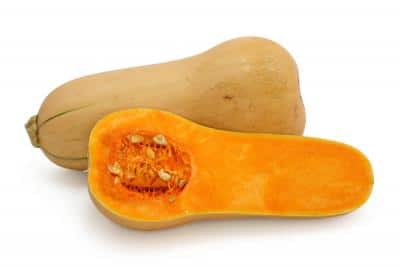
Your Body
Your soccer ball-sized uterus is sitting between your belly button and sternum, crowding your organs and causing you a myriad of issues: indigestion, constipation, hemorrhoids and trouble sleeping. As you baby grows, your stomach is being squeezed along with other organs and moving closer to your esophagus. The end result is indigestion and heartburn. An antacid like Tums will offer some relief. Keep constipation at bay by consuming a variety of fluids, eating a high-fibre diet and doing Kegel exercises. Hemorrhoids, varicose veins in your rectum, are sometimes caused by constipation in pregnancy. Apply witch hazel with a cotton pad to your anus to reduce swelling or bleeding and wet or dry baking soda to alleviate itching. Relax in a warm baking soda bath, don’t sit or stand for too long or don’t strain during bowel movements.
You need your rest but your belly bump and strange and vivid dreams are getting in the way of sleep. Lying on your side with a pregnancy pillow or three regular pillows — one for your head, between your knees and back — might make you feel more comfortable when you’re horizontal.
Your dreams are healthy and normal. They’re your mind’s way of processing angst or worry about giving birth and impending motherhood. Have your partner give you nighttime massages — it will relax you and baby will love it, too.
Baby’s World
When measured from the top of his head to his bum, he’s approximately 22 cm. (8.66 in.) and weighs 680 g. (1.5 lbs); he’s the size of a squash. Tiny blood vessels (a.k.a. capillaries) are making his skin rosy. Here’s proof that his optic nerve is working: shine a light on your stomach and the baby will immediately turn his head. Under his gums tooth buds have been forming. His nostrils are unplugged so he can practice breathing. You might feel him hiccup now that his vocal cords are operational. Rings, joints and ligaments are taking shape on his spine.
Fun Fact
Fetuses have been known to cover their ears to shield themselves from loud noises they hear outside the womb.
Week 26
Pregnancy week by week: You are 26 weeks pregnant.

Your Body
Omega-3 essential fatty acids reduce your risk of postpartum depression, improve your memory and help build baby’s rapidly developing brain, especially in the third trimester. So where do you find them? These polyunsaturated fats — healthy fats — are one of four kinds of fats that your body derives from foods like fish, the richest source of omega-3s. Fish can contain harmful toxins like mercury and PCBs. However, you can safely eat ocean perch, sole, halibut, wild salmon, haddock, cod, sea bass, trout, flounder and pollock while pregnant. Consumption of canned albacore tuna should be restricted to six ounces or less weekly and canned light tuna, shellfish, smaller ocean, farm-raised or store-bought freshwater fish to 12 ounces. Fish to avoid during pregnancy include shark, fresh tuna, swordfish, king mackerel or tilefish.
Swelling and raised blood pressure are the norm in pregnancy but be aware they are also warning signs of a serious disorder and pregnancy complication, pre-eclampsia (also referred to as pregnancy-induced hypertension or toxemia), after week 20. Severe swelling in the face, hands and ankles, sudden excessive weight gain, headaches and protein in the urine are symptomatic of this incurable but manageable, condition, which affects five percent of moms. It reduces blood flow to you and your baby so contact your doctor right away if you start exhibiting symptoms.
Pelvic rocking exercises are an easy and simple way to reduce back pain and make your abdominal and lower back muscles stronger. Try this simple technique: stand against a wall with your knees slightly bent, hip-distance apart. Press the small of your back against the wall as you inhale. Exhale as you release the position. Repeat this 10 to 15 times. You can also do this exercise lying on the floor.
Baby’s World
Measured from head to bottom, she’s 23 cm. (9.1. in.) and weighs 0.91 kg. (2 lb.); she’s about the size of a zucchini. She’s practicing a new skill, opening and closing her eyes when she wakes and sleeps. Her peepers, regardless of her race, are probably blue and remain that shade until some time after she is born. Her immune system is absorbing mom’s antibodies and gearing up for life in the outside world with rapid speed. Brain development and activity is ramping up, fine-tuning her hearing and sight.
Fun Fact
By the end of the third trimester, your uterus will hold nearly one liter of amniotic fluid.
Week 27
Pregnancy week by week: You are 27 weeks pregnant.

Your Body
Your uterus is now the size of a basketball so it’s no surprise you’ve perfected the pregnancy waddle. And with the third trimester fast approaching, you’re experiencing a case of déjà vu: a weak bladder, fatigue and anxiety have returned. Stress incontinence, leaking urine while you laugh, sneeze or cough, is the result of pregnancy hormones and your bladder being compressed by your developing baby. Kegels, pelvic floor exercises, will reduce your trips to the bathroom.
Exercising is an excellent way to boost your energy and lighten physical discomfort, although it may take a lot of effort to motivate yourself. Dancing, low-impact aerobics, prenatal yoga and Pilates, swimming and walking keep you fit and make you feel more confident during childbirth. But don’t overstretch: cartilage, joints and ligaments soften and relax during pregnancy and may give you the false impression that your body can go beyond its limits.
Worrying about labor and delivery is natural, particularly if you are pregnant with your first child; giving birth is no small feat. Venting to your partner, family and friends, journaling about your concerns, taking childbirth, infant CPR and newborn care classes and investigating pain-relief options during labour should help ease your mind and make you better equipped for the big event. Remember, after you see your baby’s sweet face for the first time, you will forget everything else.
Baby’s World
For the first time, your baby can be measured from head to toe because his legs have begun to uncurl. He is approximately 32 cm. (12.6 in.) and weighs 0.91 kg. (2 lbs.); he’s roughly the size of a cauliflower. He tripled in length during the second trimester. Brain activity can be detected. He’s sporting longer eyelashes. Sucking his thumb strengthens his cheek and jaw muscles. Baby is still inhaling amniotic fluid so his hiccups don’t make noise but mom can certainly feel and see them when her belly jumps. Fat layers bulk up his frame. If your partner presses his ear against your belly, he may be able to listen to the baby’s heartbeat.
Fun Fact
When your doctor or midwife measures your belly from the pubic bone to the top of your uterus, the distance equals approximately how far along you are in your pregnancy. For instance, if the length is 20 centimeters, you are 20 weeks pregnant.
Week 28
Pregnancy week by week: You are 28 weeks pregnant.

Your Body
Pat yourself on the back, mama, you’ve reached the third — and last — trimester! The top of your uterus is sitting midway between your breasts and navel, shifting your gravity forward and causing backache. Plus, if your little one has flipped into a head down, bottom-up position (the right one for birth) this puts pressure on the sciatic nerve. Sciatica produces sharp, shooting pain, numbness, or tingling that begins in your lower back or bottom and travels down the back of one of your legs. The condition could remain until delivery or subside once your baby shifts. You can reduce aches and pains by wearing comfortable shoes, giving yourself adequate back support when sitting, applying a heating pad, doing pelvic tilts, swimming and visiting an acupuncturist or chiropractor.
Women gain, on average, about 10 pounds in the final stage of pregnancy. Added weight can make you feel more tired and contribute to musculoskeletal pain. And as a result of your uterus being crammed into your ribcage, you are also short of breath even if you’re not active. When baby drops farther into your pelvis, breathing should be less of a challenge. FYI, heart palpitations, a sense that your heart is skipping a beat or fluttering, is normal in pregnancy, too. Take a load off and relax when you can: get a pregnancy massage, sip tea, listen to classical music or meditate.
Baby’s World
Measured from her crown to the bottoms of her feet she is 40 cm. (15.75 in) and weighs 1.1 kg (2.4 lb.); she’s roughly the size of a head of lettuce. Her irises contain pigment but it will be six months to a year after her birth before her real eye color is revealed. She is becoming chubbier and her wrinkled skin smoother. She can smell and turn her head from side to side. Her kicks are vigorous, and she may have a full head of hair — or not. Grooves and folds are forming on the surface of her once-smooth brain.
Fun Fact
Studies show that by this week baby can distinguish between mom and dad’s voices.
Week 29
Pregnancy week by week: You are 29 weeks pregnant.
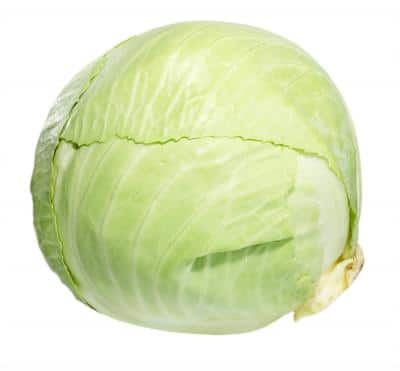
Your Body
In the last month, your uterus has stretched four centimeters (or 1.5 inches). Your baby is slowly moving into the correct birthing position, headfirst facing your spine. If he is positioned bum or feet first (breech), chances are you will undergo a c-section; positioned head down, facing your stomach can mean painful, arduous “back” labour for you. Don’t lose sleep over it though, there is ample time between now and your due date for baby to readjust himself in the womb to the occiput anterior position.
Your growing appetite is the result of a fetal growth spurt during the third trimester. Satisfy your unborn baby’s dietary needs by choosing your meals wisely and cutting down on fast foods and desserts. Though they are deliciously tempting, they do not contain any nutrients. A healthy pregnancy diet should be diversified (fruits, vegetables and whole grains) and contain foods that are abundant in protein, vitamin C, calcium, folic acid and iron. Iron supplements can cause constipation so it’s easier to get your daily requirements from foodstuff rather than a bottle. A high-fiber diet also gives your sluggish intestines and bowels a much-needed push.
There are many important decisions to make. Will you opt for natural childbirth or ask for an epidural? Who will be your support persons in the delivery room? Will you breastfeed? If you have a boy, will you have him circumcised? Formulating a plan now cuts down on your to-do list before baby’s birthday.
Baby’s World
He is approximately the size of a small cabbage, measuring 42 cm. (16.7 in.) from head to toe and weighs roughly 1.24 kg (2.7 lb.). His skull is expanding to accommodate his growing brain. The areas of his brain responsible for intelligence and personality have become multifaceted. His testicles are descending from near the kidneys, through the groin to the scrotum. For little girls, the clitoris is exposed, as the labia is not developed enough to conceal it. His bones are stockpiling, iron, calcium, and phosphorus but will remain soft and pliable enough to maneuver through the tight birth canal. Fat stores underneath his skin are turning him into the plump, cuddly newborn you will meet when he is born.
Fun Fact
From now until his birth, your baby will gain about half a pound a week.
Week 30
Pregnancy week by week: You are 30 weeks pregnant.
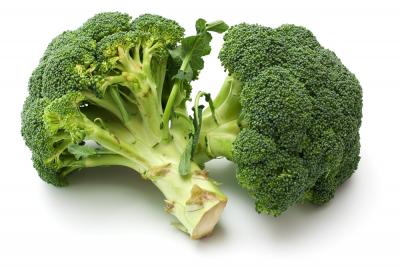
Your Body
Do you keep misplacing your car keys or forgetting appointments? Believe it or not, research confirms pregnancy hormones decrease the volume of your brain cells. This startling fact, combined with lack of sleep and extra stress contributes to memory loss, dubbed “mommy brain.” Rely on to-do lists to keep on top of things and don’t bother with herbal remedies — they’re unsafe when you’re pregnant. The good news is your brain cell count will return to normal after you give birth. The bad news is you probably won’t see an improvement in your foggy mind for a few months when your wee one is, with any luck, sleeping through the night.
Looking in the mirror you may feel like you resemble the Michelin Man at times, what with your oversized belly and swollen and puffy hands, ankles and feet. Edema in pregnancy is the result of your body retaining more water and collecting it in your tissues. It can be more problematic at the end of the day and during warm summer months. Drink lots of water, put up your feet whenever you can, avoid sitting for long stretches, lie on your left side and don’t wear socks that are tight at the calves or ankles.
It’s only 10 weeks until D-Day (delivery day) and you, undoubtedly, have been hearing a litany of delivery room war stories from other mothers. This can make your anxiety level spike (wish you could skip labor altogether and your baby take permanent residence in your womb?). They may think they’re doing you a favor, preparing you for what lies ahead but the truth is no one can predict exactly what will happen during your labor and delivery (other than producing a healthy, precious baby). Thank them for sharing but tune them out if you start feeling overwhelmed.
Baby’s World
From her crown to her feet she measures 43 cm. (17 in.) long, about the size of a bunch of broccoli, and weighs about 1.35 kg (3 lb.). Her brain is in charge of actions like breathing and temperature regulation. As she grows, thanks to insulating fat, she has less room to wriggle around and you may find her moving less often and with less force. She can distinguish between light and dark and follow a light source with her eyes.
Fun Fact
When you poke or tap your stomach, baby may respond with a kick in the spot you originally touched.
Weeks 31 and 32
Pregnancy week by week: You are 31 and 32 weeks pregnant.

Your Body
You’re probably putting on about one pound a week during pregnancy (keep in mind, baby accumulates 50 percent of that weight). A growing baby and bump, not to mention back pain, heartburn, and frequent trips to the toilet, can only mean sleep deprivation for you as you toss and turn trying to find a comfy position to get your 40 winks. Eschew sleeping on your back (and, obviously, your stomach), and lie down on your left side, legs parallel with a pillow placed between your bent knees to support your stomach and align your hips. This sleep posture permits blood and nutrients to flow unobstructed to the placenta.
Nerves on edge as your due date loom closer? Practicing the breathing exercises and massage techniques you learned in prenatal class may help relax you (and possibly your partner). If you’ve decided on natural childbirth, reviewing the birthing positions (sitting on a medicine ball, squatting, kneeling on all fours, side-lying, leaning against your partner) can also elevate your mood and make you feel better prepared for labor.
Baby’s World
From her crown to the bottoms of her feet, she measures between 41 and 43 cm. (16 – 17 in.), weighs 1.6 to 1.8 kg. (3.5 – 4 lb.); she’s approximately the size of a pineapple. Her hard-working brain can process data from all five senses. For instance, she can clasp her hands, smell scents you inhale and taste food you eat through the amniotic fluid. Her eyeballs can rotate in their sockets, and her bladder passes urine. Her developing lungs continue to line themselves with a surfactant, a fatty material that inflates lung sacs and prevents them from collapsing after birth. She has been rehearsing sucking and swallowing for months but these reflexes do not work in tandem until at least week 32. She dreams during REM sleep and slumbers for extended periods.
Fun Fact
Dutch researchers believe that babies are capable of retaining short-term memories as early as week 30.
Weeks 33 and 34
Pregnancy week by week: You are 33 and 34 weeks pregnant.

Your Body
The top of your uterus has journeyed five inches north of your navel at this pregnancy stage. As the baby’s head points south, it may feel like his feet are crowding or lodging into your ribcage. You might be able to persuade your little one to move into another position — and get some temporary relief — by inhaling as you raise one arm over your head. Exhale and release the position. Repeat the same stretch using the opposite arm. In the next month, your baby’s head will eventually drop into your pelvis. This frees up space so you have more breathing room and puts less pressure on your stomach (you’ll notice you’ll be able to eat more and your heartburn will subside). The downside is that shift in weight transfers to your pelvis and on your bladder. Don’t be surprised by deep pressure, numbness and tingling deep in your pelvic region and discomfort when you walk.
You might confuse Braxton Hicks contractions (a.k.a false labor), hardening and tightening of the uterine muscles, with true labor pains. The former are sporadic, short-lived, less than a minute or two, and relatively painless. Taking a stroll, changing your position and getting some rest can nip them in the bud. They’re a dress rehearsal for active labor, which is characterized by contractions at regular intervals that increase in intensity and run along your lower back and travel to the front of the abdomen without dissipating, even if you change positions. Speaking of contractions, be diligent about doing Kegel exercises — contracting and relaxing pelvic floor muscles — 25 times, three to four times a day. Strong pelvic muscles give you the strength to push during labour.
Should your baby be born this week, he or she would have a high rate of survival. Symptoms of premature labor include leaking amniotic fluid, passing a pink or brown discharge, period-like cramps, sometimes accompanied by nausea and diarrhea, contractions that reoccur every 10 minutes, a sensation that your baby is pushing down and low backache.
Baby’s World
He is between 44 and 48 cm. (17 – 19 in.) long, weighs about 2 to 2.28 kg (4.4 – 5 lb.), and is about the size of a cantaloupe. He’s likely reached his full height; the body’s priority now is plumping up baby. He will pack on 50 percent of his birth weight in the following seven weeks. Consequently, his jabs, and kicks have probably begun to hurt a tad. There is also less padding between mother and baby since the quantity of amniotic fluid has reached its peak. Fontanelles (or soft spots) on the skull are bony plates that are not fused so the baby’s head can pass through the birth canal without difficulty. The bones won’t join together until he is 18 to 24 months. His adrenal glands have started pumping adrenaline, a hormone and neurotransmitter mom relies on during labor.
Fun Fact
Sweet and sour are two flavors that baby can now differentiate between in the amniotic fluid. Some researchers reason it’s how Mother Nature prepares an infant for breast milk, which contains an array of tastes from mom’s diet.
Weeks 35 and 36
Pregnancy week by week: You are 35 and 36 weeks pregnant.

Your Body
Nice job, mommy, you’ve carried your baby to term! She may be born within days or you might not meet her for another few weeks. Now that you’ve entered your ninth month of pregnancy, your physician or midwife will want to see you weekly until you have your baby. Between weeks 35 and 37, you will be screened for group B strep (GBS), a bacteria found in the vagina, rectal area, and intestine in up to 30 percent of women. Although it has no symptoms and poses no health risk to the mom, an infection can be transmitted to the baby as she moves through the birth canal (she’ll be in danger of developing meningitis or pneumonia). You’ll be treated with antibiotics during labor if the cotton swab test comes back positive.
Your health care provider will also check the position of your baby and your cervix for effacement and dilation — when the cervix stretches, thins and opens in preparation for childbirth — by doing a manual pelvic exam. Dilation is measured in centimeters; for example, you’re fully dilated at 10 centimeters and ready to start pushing.
Consider this mind-boggling piece of info: your uterus is 1,000 times bigger than its original size! Your baby is slowly dropping farther into your pelvis, a process called engagement or lightening. The pressure down below is amplified and may give you the sensation that your baby is going to fall out! Never fear, it won’t happen. Offset the heaviness with pelvic tilts and cat stretches.
The fetus lives in and is protected by a fluid-filled amniotic sac, referred to as the bag of waters. This membrane normally breaks — sometimes when you’re asleep — just before you go into labor. But it is possible for it to rupture hours or days prior to labor. You will feel a warm gush of water and then steady leaking. Once your water breaks, your baby is highly susceptible to infection so contact your doctor immediately (and refrain from bathing or having sex).
Baby’s World
She is roughly 49.5 cm. (19.5 in.) long and weighs between 2.5 and 2.75 kg (5.5 – 6 lb.); she’s about the size of a honeydew melon. Although she continues to put on weight, her growth has scaled back; she needs to fit through the narrow birth canal on her journey to the outside world. Her space is cramped so you might see an impression of her hand or foot pressed inside your bump. Your body is absorbing some of her amniotic fluid as it begins to decrease. Her digestive track won’t be tested until she drinks breast milk for the first time.
Fun Fact
As fat continues to deposit under his skin, tiny, adorable dimples are forming on her elbows, shoulders, hips and knees.
Weeks 37 and 38
Pregnancy week by week: You are 37 and 38 weeks pregnant.

Your Body
What’s the best way to cope with a barrage of pregnancy signs — insomnia, Braxton Hicks contractions, an overactive bladder, backache, swelling and indigestion? Go for a massage. It may not be a cure-all but it will certainly assuage some conditions and relax you as you await the baby’s imminent arrival.
The longer baby stays in utero, the more weight he will gain. It’s a different story for mom, however. If he hangs around past his due date, you may stop putting on weight and can even drop a pound or two.
Many babies are curled into a posterior position in the uterus (the baby is head down and faces the front of your body). This can lead to lengthy, painful “back labor.” Your midwife or doctor can suggest exercises to coax your baby into turning his head towards your spine. If this does not work, your prenatal teacher can provide strategies for dealing with back pain during labor.
You’re right on schedule if your pregnancy nesting instinct, a burst of energy coupled with a strong urge to clean and reorganize your home, kicks in now (some moms-to-be start nesting months earlier). There’s nothing wrong with reorganizing closets and cupboards, making things clean, spotless and fresh for the newest member of your family, it’s actually a primal instinct. Just remember to pace yourself and conserve your energy because labor day is just around the corner.
Baby’s World
He’s about the size of a watermelon, measuring 49.5 to 50 cm. (19.5 – 20 in.) from crown to feet and weighing 2.95 to 3.2 kg (6 – 7 lb.) He will swallow amniotic fluid and the lanugo body hair and vernix coating he’s shedding. This waste will be passed in his first bowel movements (meconium) outside the womb. If he’s hiccupping more than usual it’s due to the amniotic fluid he’s breathing — his windpipe is still air-free.
Fun Fact
The circumference of your baby’s head and tummy will (almost) match by this stage in pregnancy, allowing him to move smoothly through the tight passageway from the uterus to the cervix and vagina during birth.
Weeks 39 and 40
Pregnancy week by week: You are 39 and 40 weeks pregnant.

Your Body
You’ve reached the end of the third trimester of pregnancy, a colossal physical, mental and emotional achievement. You’re eagerness and excitement about seeing your little girl or boy may be tempered by frustration. Sooo, when is my baby going to make an entrance, you’re wondering? It’s frustrating playing the waiting game, sitting at home fielding calls, emails, Facebook messages and Tweets, asking, “Have you had the baby yet?” Not to worry, close to 50 percent of pregnancies last longer than week 40; however, your caregiver will probably want to induce you if you are overdue (i.e. before you go beyond 42 weeks). You can also experiment with natural remedies for inducing labor like nipple stimulation, drinking red raspberry leaf tea (a herbal tea safe for pregnancy), walking, and have sex. There’s no guarantee you will see results, though.
In the interim, enjoy your freedom. Soon you and your partner will be busy feeding, burping and rocking your beautiful newborn to sleep, changing diapers and doing laundry. Keep yourself occupied so you’re not dwelling on the fact that you’re still not a mother. Try to go about your normal routine (we understand it’s a struggle moving around with your giant bump): see a movie, treat yourself to a mani-pedi and relax on an outdoor patio. Pack your hospital bag and finish last-minute touches to the nursery but delegate strenuous chores to your significant other. Your ultimate goal is to be well-rested before labor begins. Before you know it, you’ll be holding and kissing your infant.
Baby’s World
As your baby bids goodbye to her watery home, she weighs 7 – 7.5 lbs. and measures between 20 – 20.5 in.; she’s approximately the size of a pumpkin. Soon a nurse will place her on a scale, and you’ll find out precisely how much she weighs.
All of her organs are completely developed and ready to function outside mom’s body. Exactly one minute and five minutes after birth her Apgar score will be tested. It provides a quick overview of her condition and assesses her color, muscle tone, reflexes, breathing and heart rate, in case she needs treatment for anything after emerging from the birth canal. At one minute, a healthy newborn normally scores a seven or higher; at five minutes, it increases to nine or 10.
Fun Fact
In utero, baby’s body temperature is regulated — she’s been floating in 37° degree water for nine months. As a newborn, she will have difficulty regulating her own body temperature so “brown fat” has formed around her neck, shoulders and main organs to help her out in the weeks following her birth.









